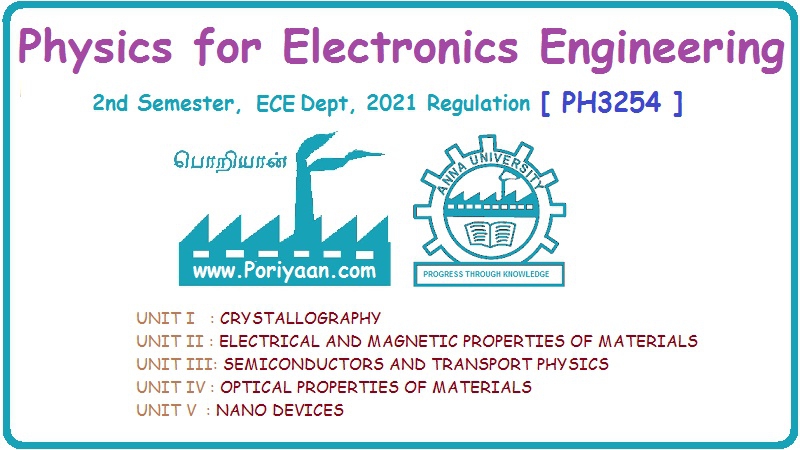Physics for Electronics Engineering: Unit V: Nano Devices
Quantum Confinement
Definition, Principle | Nano Devices
It is a process of reduction of the size of the solid such that the energy levels inside become discrete.
QUANTUM CONFINEMENT
Definition
It
is a process of reduction of the size of the solid such that the energy levels
inside become discrete.
In this case, small "droplets" of isolated electrons are created. Thus, the energy of a small volume of such materials are quantized just like in an atom. This type of artificial or fake atoms have tunable electrical properties.
The
quantum confinement effect is observed when the size of the particle is too
small to be comparable to the wavelength (de-Broglie wavelength) of the
electron.
It
is to be noted that only a small percentage of electrons that are free to move
during confinement and majority of electrons still tightly bound within inner
orbitals.
Usually
in order to reduce the dimensions of a given volume, either bottom-up approach
or top-down approach is followed.
In
bottom-up approach, low-volume structures are built atom by atom. In the
top-down approach, material is removed from one or more of three dimensions
(length, width, height) of a larger solid.
In
both cases, a structure small enough for quantum behavior to manifest can be
produced.
Physics for Electronics Engineering: Unit V: Nano Devices : Tag: : Definition, Principle | Nano Devices - Quantum Confinement
Related Topics
Related Subjects
Physics for Electronics Engineering
PH3254 - Physics II - 2nd Semester - ECE Department - 2021 Regulation | 2nd Semester ECE Dept 2021 Regulation
